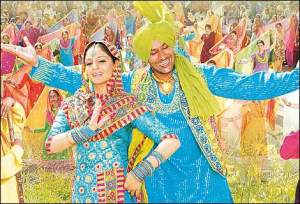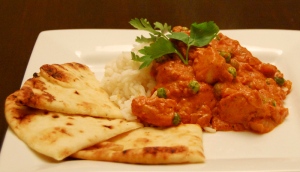 I am a Vegan and this ( ← ) is my favorite post ( technically second favorite after About) & there lies the irony of life. I may not have tasted butter chicken but I can’t deny that the beauty n smell of this dish has made sure that I will die with a regret. The story of butter chicken is the best known food story in India perhaps the intriguing story behind Butter Chicken was the thrust behind writing this blog.
I am a Vegan and this ( ← ) is my favorite post ( technically second favorite after About) & there lies the irony of life. I may not have tasted butter chicken but I can’t deny that the beauty n smell of this dish has made sure that I will die with a regret. The story of butter chicken is the best known food story in India perhaps the intriguing story behind Butter Chicken was the thrust behind writing this blog.
What is Butter Chicken?
Lets start with, What is Butter Chicken? It is dressed chicken marinated overnight in a yogurt and spice mixture usually including garam masala, ginger garlic paste lemon or lime, pepper , coriander and chili. The chicken is traditionally cooked in a tandoor, but can also be grilled, roasted or pan-fried. The sauce is made by heating and mixing butter ,tomato puree, khoya and various spices, often including cumin , cloves , coriander and fresh cream. Cashew paste can also be added, and will make the gravy thicker. Of all the spices added to the dish it is dried Qasuri methi leaves that makes the greatest contribution to the characteristic flavor of the dish. Once the sauce is prepared, the prepared chicken is chopped and cooked until the gravy and chicken have blended. The dish is garnished with white butter, fresh cream, sliced green chilies and Quasuri. Butter chicken is usually served with naan and rice.
Tandoori Tale!
Butter chicken (or murgh makhani) is part of Indian cuisine, popular in countries all over the world. The origins of butter chicken can be traced back to Dlwalon ki Dilli. Butter chicken is regarded to have been first introduced by a restaurant called Moti Mahal, located in Daryaganj . Butter chicken is usually served with naan, roti, parathas or steamed rice.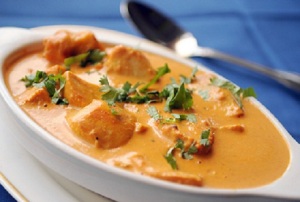
Before independence , India consisted of Current day India, Pakistan and Bangladesh. With division of India , in to India and Pakistan . The state of Punjab was also divided in to two pieces, North west frontier Punjab in Pakistan and Punjab in India. Now in the combined Punjab in city of Peshawar lived a guy named Kundan Lal Gujral . He used to operate a small restaurant called Moti Mahal. It is rumored that he was the one who made and perfected this dish called Butter Chicken.
After partition Kundan Lal Gujral came to India and settled in Delhi and opened his Moti Mahal restaurant in 1947. Butter chicken is not a dry dish. The chicken has a thick gravy. Usually the gravy is spicy and cooked in traditional Punjabi style.People call it Murg makhani & chooza makhani also. It should be eaten with naan. So when you enjoy this dish , forget counting your calories. Let’s end this with my foodiekafunda.
Foodie ka Funda No.5:
Tum mujhe Khoon do, Mein tumhe Butter Chicken Doonga! (Ok! Ok! I know bakwaas hai but remember, I asked for your foodie ka funda and didn’t give any. So deal with it!)
To learn how to make Butter Chicken click on play :
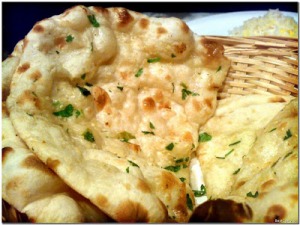
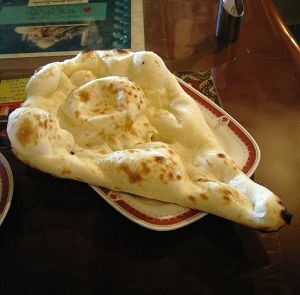
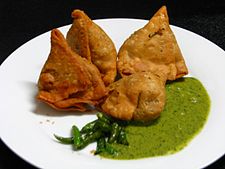

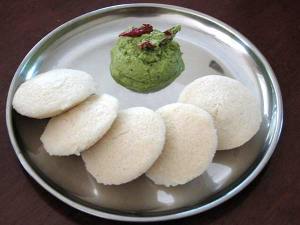
 The contention is that this absence from the historical record could mean that Idlis are an imported concept — perhaps from Indonesia which has a long tradition of fermented products, like tempeh (fermented soy cakes), kecap (from where we get ketchup) or something called kedli, which is like an idli. This is plausible enough given the many links between Southeast Asia and South India, through rulers and traders. There were no steaming vessels in South India in seventh century. But steaming vessels are not required for steaming dishes , steam can be produced using cloth over the vessel, still this method is used in South India.
The contention is that this absence from the historical record could mean that Idlis are an imported concept — perhaps from Indonesia which has a long tradition of fermented products, like tempeh (fermented soy cakes), kecap (from where we get ketchup) or something called kedli, which is like an idli. This is plausible enough given the many links between Southeast Asia and South India, through rulers and traders. There were no steaming vessels in South India in seventh century. But steaming vessels are not required for steaming dishes , steam can be produced using cloth over the vessel, still this method is used in South India.
